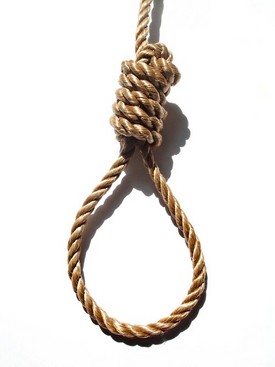What were the punishments of committing a crime ?
The Medieval court was called a jury which dealt with all the crimes except the serious crimes, whoever did not attend had to pay a fine. There was also the Hue and Cry. If they were getting harassed they would shout the Hue and Cry. People that heard someone shouting the Hue and Cry but didn't help them got a fine.
People believed that criminals would only learn how to behave properly if they feared what would happen to them, if they broke the law. Accused person had to go through an ordeal.
There were three ordeals:
• Ordeal by fire; An accused person held a red hot iron bar and walked
three paces. His hand was then bandaged and left for
three days. If the wound was getting better after the
three days, you were innocent. If the wound had not
got better, you were guilty.
• Ordeal by water; An accused person was tied up and thrown into water.
If you floated you were guilty of the crime.
• Ordeal by combat; This was used by noblemen who had been accused of
something. They would fight their accuser. Whoever
won was right. Whoever lost was usually dead at the
end of the fight.
People believed that criminals would only learn how to behave properly if they feared what would happen to them, if they broke the law. Accused person had to go through an ordeal.
There were three ordeals:
• Ordeal by fire; An accused person held a red hot iron bar and walked
three paces. His hand was then bandaged and left for
three days. If the wound was getting better after the
three days, you were innocent. If the wound had not
got better, you were guilty.
• Ordeal by water; An accused person was tied up and thrown into water.
If you floated you were guilty of the crime.
• Ordeal by combat; This was used by noblemen who had been accused of
something. They would fight their accuser. Whoever
won was right. Whoever lost was usually dead at the
end of the fight.
Crimes
Murder- Murders were a very common crime in medieval times. If the
murderer was found, he would have probably been sentenced to
death.
Vagrancy- It was against the law to be poor or homeless in Medieval
Times. Anyone that didn’t have a job was thought to be a criminal.
Theft- People accused of stealing even a shilling could be hanged. People
who were found guilty of stealing less valuable items, could have had
their hands or ears cut off, or were burnt with hot irons, put in the
stocks, or were whipped.
murderer was found, he would have probably been sentenced to
death.
Vagrancy- It was against the law to be poor or homeless in Medieval
Times. Anyone that didn’t have a job was thought to be a criminal.
Theft- People accused of stealing even a shilling could be hanged. People
who were found guilty of stealing less valuable items, could have had
their hands or ears cut off, or were burnt with hot irons, put in the
stocks, or were whipped.

